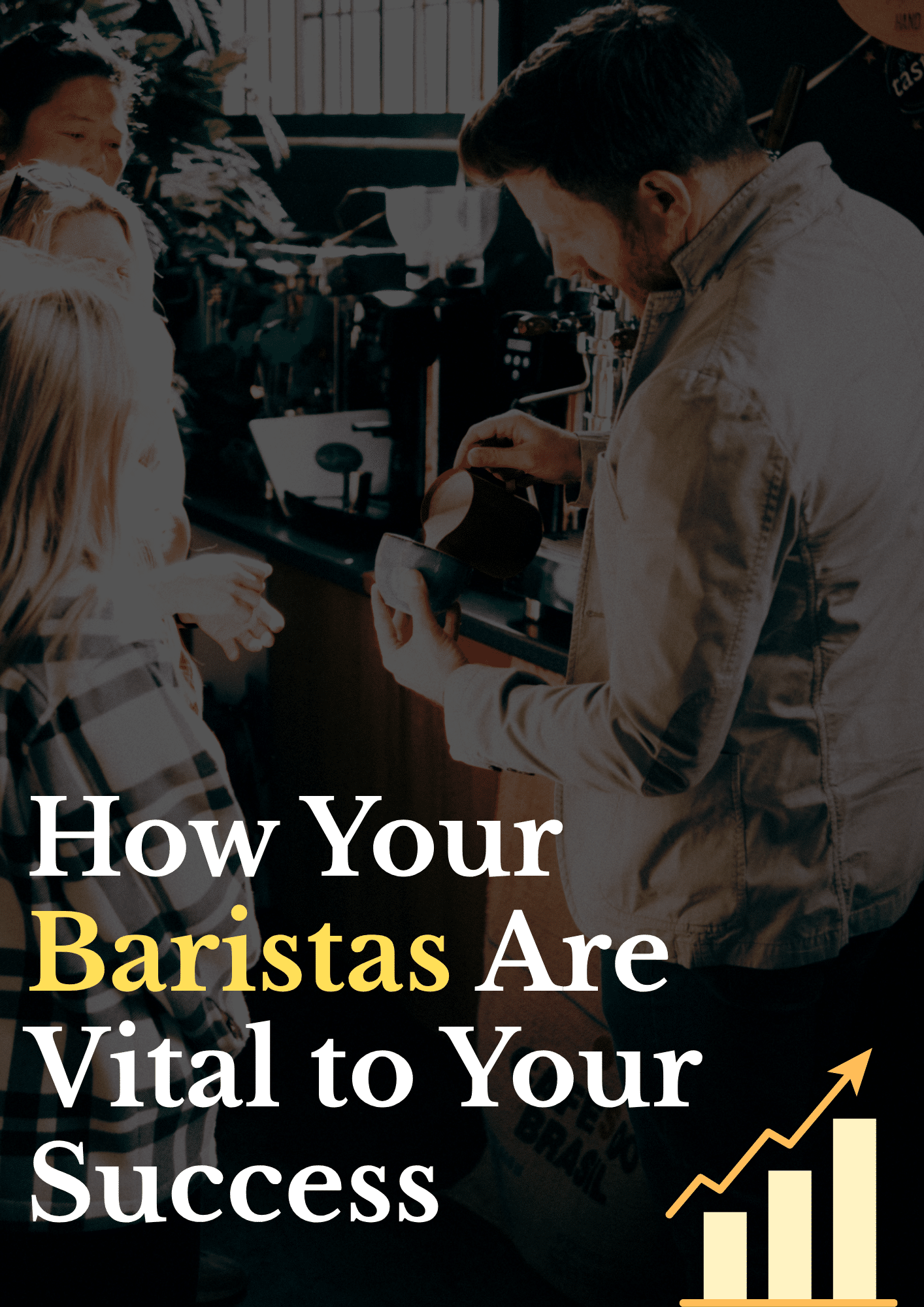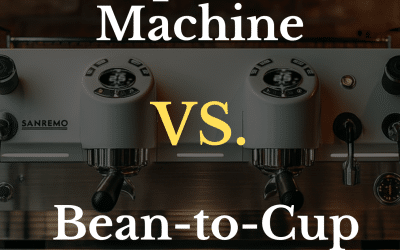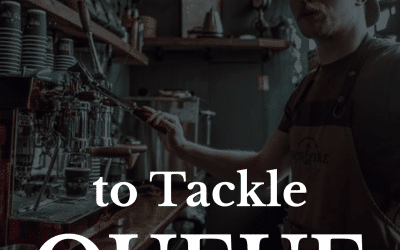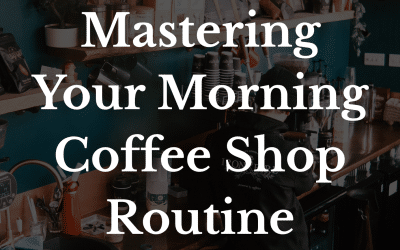Walk into any great coffee shop and you’ll notice something straight away. It’s not just the rich aroma of fresh roasted coffee or the comforting hum of the steam wand. It’s the unsung hero of any coffee shop:
The barista.
The calm, confident presence behind the machine.
They don’t just make coffee. They are the coffee shop.
At Iron & Fire, we work with countless cafés, restaurants, and hospitality venues across the UK. One thing we see time and time again is this: the success of a coffee business often hinges on the skill and confidence of the person on the machine. That’s why barista training isn’t just a “nice to have.” It’s essential.
If you follow us on social media, you’ll have seen us talking about this a lot recently – particularly on Instagram and LinkedIn.This has resonated well with a lot of you, so we thought we’d collate our thoughts into a longer guide and share it on our website.
Here, we’ll explore what proper barista training looks like, the key barista skills every team should master, and how investing in ongoing learning can seriously elevate your customer experience – not to mention your bottom line.
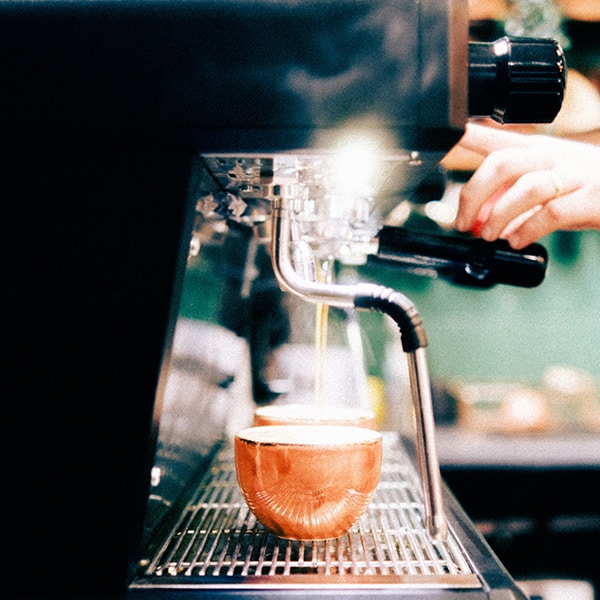
Why Baristas Matter More Than You Think
Let’s be honest: you can have the best beans in the world (hopefully roasted by us), the most beautiful café interior, and the trendiest playlist. But if your barista doesn’t know how to pull a decent shot or struggles with steaming milk, your customer isn’t coming back.
Baristas are the face, voice, and tone of your brand.
They’re the first hello, the last thank you, and the steady hand that turns a bag of beans into something magical. When a customer receives a perfectly balanced flat white with silky milk and a bit of simple latte art, they feel looked after. That moment of quality builds loyalty. And it’s this loyalty that keeps customers coming back – something we all know is vital to a successful business.
But it doesn’t happen by accident. It comes from training.
What Does Barista Training Actually Cover?
There’s a lot more to it than knowing how to make a cappuccino. A comprehensive barista training programme will include:
1. Espresso Extraction
This is where it all begins. Learning how to dial in a grinder, adjust for time and yield, and extracting the best from the beans isn’t just science – it’s an art in our eyes. A barista should understand the variables that affect espresso, from dose to temperature, and how to taste the difference between under-extracted and over-extracted shots.
Why it matters: It should be self explanatory as to why your baristas should be able to pull the perfect espresso. If they get this wrong, even the best coffee beans can taste bitter, sour, or just a little flat. Get it right, and every coffee will sing.
2. Milk Steaming
Steaming milk isn’t about cranking the wand and hoping for the best. It’s about texture, temperature, and consistency. Proper microfoam should be glossy, smooth, and sweet. Training helps baristas achieve that every time – not just when they’re having a good day. Consistency is key!
Why it matters: Great milk equals better drinks. It also prevents customer complaints about overly hot or scalded milk.
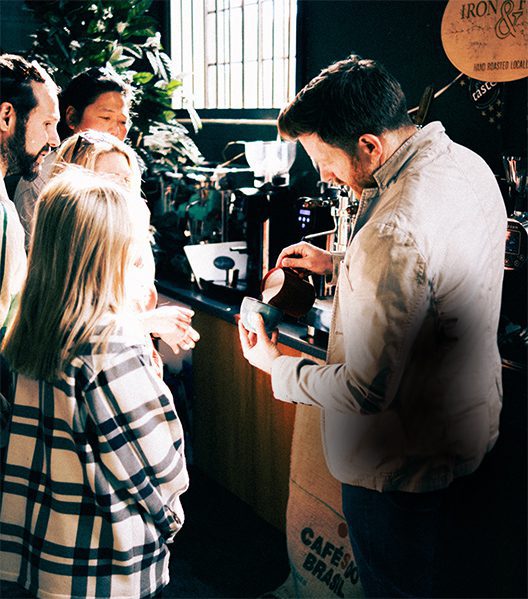
3. Latte Art
We often hear people say, “Latte art isn’t really important.” We politely – but firmly – disagree. Obviously, it’s most important that the coffee is well made, starting with the two points above. But that doesn’t mean that latte art should be ignored. A little heart or rosette (or a swan if you want a show stopper) on top of a flat white may not change the flavour, but it transforms the customer’s perception. It signals care, precision, and pride.
Why it matters: It’s a visual sign of quality. And yes, latte art is trainable. A good latte art tutorial gives even beginners the confidence to create, but thorough barista training will help to truly hone your baristas’ skills.
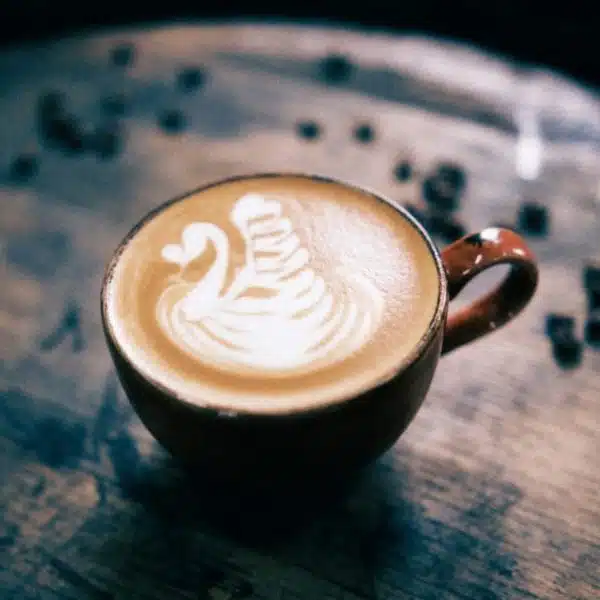
4. Coffee Bar Mise En Place
A well organised bar is a productive bar. Mise en place – a French culinary term meaning “everything in its place” – is all about having equipment, tills, milk, cups, etc. exactly where they’re needed. Training staff to set up the bar with intention avoids the chaos of staff climbing over each other to get to where they need to be and instead creates calm, professional energy and sets the stage for consistent, fast-paced service.
Why it matters: As Ryan says, a coffee station with a poor layout will lead to “slower service, more stress, lower conversion of new customers and lower repeat business” – all of which you want to avoid!
5. Troubleshooting & Cleaning
Things go wrong. Machines drift, grinders clog, someone forgets to clean the group head. Our team has spent enough time in the hospitality industry to know this! Of course, there will sometimes be issues that require a higher level of attention, which is exactly why we offer repairs and maintenance on coffee equipment. But there are smaller problems – such as a group head that needs cleaning, or a steam wand that needs unblocking – which baristas can fix themselves if they are taught to do so. This is exactly what we cover in our barista training, as well as providing the toolkit to do so.
Why it matters: Trained baristas don’t panic – they fix. Teaching staff to spot issues and resolve them saves time and money, as well as protecting equipment and reducing wastage.
6. Tips For Streamlining Service
Efficiency doesn’t mean rushing… it means moving with purpose. If your baristas are trained by us at Iron & Fire, we’ll have them thinking one step ahead, multitasking smartly, and communicating with teammates – transforming the flow of service. From batching drinks and splitting milk to having clear roles for each team member behind the bar, small changes make a big difference.
* Case study *
We started working with a new customer in spring 2025 and one of the first requests from the manager was:
“Can you come and train my team? They’re too slow during busy times”
We’re always happy to work with our customers to train staff, but we had a feeling right from the start that this wouldn’t be a staff problem.
And as we guessed, when our wholesale manager, Ryan, visited, he didn’t see lazy staff.
He saw:
– Poor equipment and till layout, ruining the customer flow
– Staff steaming milk for one drink at a time
– Team members with no set role
As Ryan so aptly puts it, “the staff were doing their best in a broken system”.
We worked with this customer to make 3 layout changes to the coffee bar, introduced a milk batching routine and trained the staff on it, and helped them to outline clear roles for each team member during service.
The result? Service speed doubled, queue times reduced.
Happier staff, happier customers. Win win!
Why it matters: During a morning rush, every second counts. A smooth system keeps customers happy, reduces stress, and increases throughput without sacrificing quality.
7. Customer Service
This is a drum we will keep banging! Our team visits lots of coffee shops, whether that’s current customers or potential new partners, when they are out on the road and they are often alarmed by the sheer lack of customer service they receive.
It’s a part that is so often overlooked in barista training, but it’s arguably the most powerful. Eye contact, remembering names, serving customers with a smile – this is what turns a first-timer into a regular. Great service is the differentiator when everyone’s menu looks the same. And the businesses who train for connection, not just competence, are the ones pulling ahead.
Why it matters: People don’t just come back for coffee. They come back for how you make them feel.
Barista Training Isn’t One-and-Done
If we had a pound for every time someone said, “Oh, our team had a barista course last year, they’re fine,” we’d be lying on a beach drinking coffee in the Maldives by now.
Barista training should be ongoing.
Why? Because:
- Staff leave, and new hires need support.
- Coffee trends evolve (think cold brew, oat milk, batch brew etc.).
- Tastes shift, and customers get more discerning.
- Even the best baristas benefit from feedback and refreshers.
We recommend offering upskilling for baristas as regularly as possible – ideally quarterly, at a minimum. The best way to do this is to have one or two ‘coffee advocates’ within your business who are responsible for monitoring consistency and delivering training.
At Iron & Fire, we deliver bespoke training for coffee shop staff, tailored to your team’s specific needs. Whether it’s a deep dive into espresso extraction or a relaxed latte art tutorial to boost confidence and creativity, we shape the session around your goals. Our aim is to equip these aforementioned ‘coffee advocates’ with the in-depth knowledge they need to pass on those skills, creating a culture of consistent, high-quality training within your business.
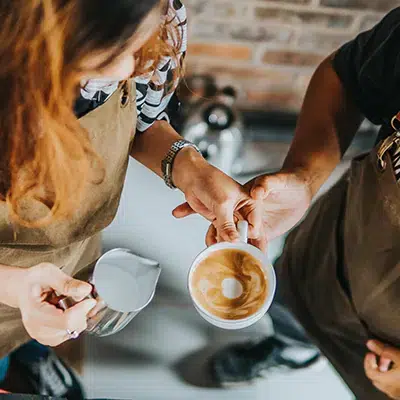
The Hidden Business Benefits of Upskilling Baristas
Let’s talk brass tacks. Yes, better coffee leads to better reviews and more repeat visits. But training pays off in ways that aren’t immediately obvious.
1. Staff Retention Improves
Baristas want to feel like they’re progressing. When you invest in their development, you send a clear message: “We value you.” This builds loyalty and reduces turnover. And if you’ve been through the process of hiring and onboarding a barista a few times, you’ll know how time and resource consuming this can be.
2. Wastage Decreases
Trained baristas waste less milk, pull more consistent shots, and dial in more efficiently. Put simply, that translates to lower costs and a more efficient workflow.
3. Your Reputation Grows
In a crowded market, word spreads fast. Customers talk. Reviews mention names. A skilled, warm barista becomes part of your brand identity – and people will cross town for them.
4. Upselling Becomes Natural
A confident barista knows how to engage with customers. They can recommend a different origin, talk about seasonal blends, or promote retail bags with ease. Training builds that confidence and provides those skills where they may be lacking.
Hiring a Barista? Look for Potential, Not Perfection
If you’re in the process of hiring a barista, you might feel overwhelmed. Should you go for experience or personality? Whilst having both is the ideal, that doesn’t come along often.
Our advice? Look for passion and coachability.
Experience is great, but it’s not everything. After all, they can learn what it takes to be a barista. A positive attitude and willingness to learn are often better long-term assets than someone who’s been behind a machine for years but refuses feedback.
Bring them in, show them your values, and give them access to proper training. You’ll be amazed how quickly they blossom if they are the right person.
Our Approach at Iron & Fire
We don’t just roast award-winning coffee (although we’re proud of that too). We believe in supporting every partner to build a thriving coffee culture.
That means offering tailored barista training sessions, on site or at our Shrewsbury roastery. Whether your team needs a confidence boost refresher, help with latte art, or a full-scale espresso skills tutorial, we’ve got the knowledge – and the patience – to help.
Our trainers are former baristas and café owners. They’ve been on the front line. They know how to teach in a way that’s empowering, not intimidating. And most of all, they love helping people take pride in what they do.
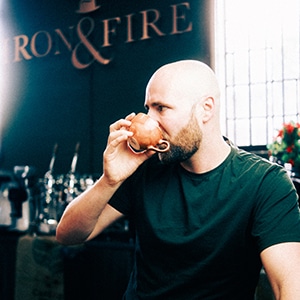
In Summary: Training Is an Investment, Not a Cost
Every time you train your team, you invest in your customer experience. You build consistency. You create moments of delight. And you give your baristas the tools to do their job with pride.
So if you want better coffee, happier staff, and more loyal customers, start with training. We promise; it’s worth it.
Looking to upskill your baristas or bring new hires up to speed?
We offer tailored barista training courses (free of charge for our wholesale partners) including espresso mastery, milk techniques, and latte art tutorials. Whether you’re just opening or growing fast, we’re here to support you.
